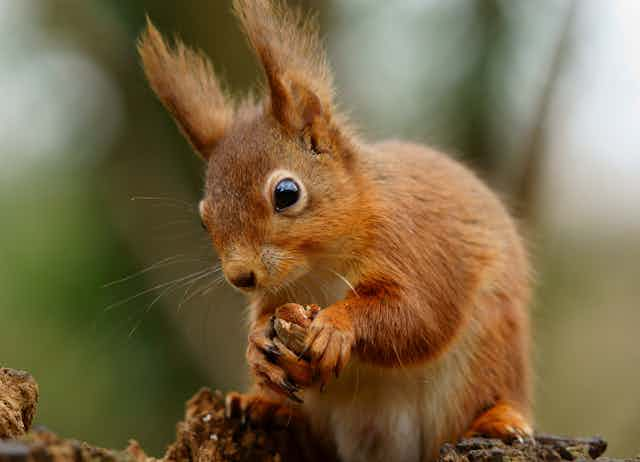The furore over Cecil the lion clearly demonstrates that the public are passionate about conserving wildlife – wherever it is. Yet conservation spending in richer nations is still trapped in a parochial “home first” mindset. Given most plants and animals, and particularly endangered species, are found in poorer countries where money goes further, why are we worrying about hedgehogs, squirrels or wild boar?
Last year, around £571m of public sector funding was spent on UK biodiversity. However only £60m was earmarked for international biodiversity, barely 10% of the total budget. From a global perspective, the UK contains only a tiny proportion of the world’s biodiversity. In terms of diversity of species, it ranks 89th in the world, and that’s despite the country’s wildlife being recorded far better than most.
If we are really serious about conserving biodiversity then perhaps those two budgets should be reversed. We’re likely to get far greater “biodiversity for our buck” on every pound spent abroad, especially if we focus on the world’s poorest developing countries, many of which are in global biodiversity hotspots.
The government’s flagship Darwin Initiative has been striving to achieve exactly this. Since 1992 it has received just £113m, but supported 943 projects in 159 countries, and its achievements speak for themselves. Projects have ranged from supporting the only national herbarium in Papua New Guinea, developing a conservation action plan for the mammals of Tanzania and conservation for critically endangered species such as the spoon-billed sandpiper and sociable lapwing. Those projects averaged only £200,000 apiece.

In contrast, our domestic concerns couldn’t appear more mundane. Take, for example, the iconic red squirrel, that bastion of British conservation. In a rearguard action to slow their decline, we are spending at least £1.2m from both public and private sources on their conservation. The government recently approved a scheme to fund population control of invading grey squirrels at £100 per hectare over five years, with a cost likely to run into the millions. In 2012 we even helicoptered five reds to Tresco on the Isles of Scilly to establish a new population (three died shortly afterwards).
Reds are listed as “least concern” by the main conservation body, IUCN. Their population is widespread and non-threatened in Europe. Meanwhile, in southern Africa, critically endangered black rhinos are being airlifted to establish insurance populations against the very real threat of extinction, and the Northern white rhino will shortly become extinct because we acted too late.
In an ideal world maintaining our native squirrel would be a justifiably worthwhile thing to do. But in the face of global biodiversity loss, does the colour of our squirrels really matter?
If there is even a tiny chance that our limited biodiversity funding could be better spent, then this is a debate that must be had; but only if we are clear that biodiversity and conservation is our aim, rather than locally emotive projects.
Public spending is one way of understanding the priority that is given to different issues in a democracy. These figures suggest an inward-looking nation, at precisely at a time when we need to propel biodiversity issues to the world stage if we hope to encourage meaningful commitments at the Paris climate talks later this year. The outcome will have far reaching repercussions for global biodiversity and for us all.
But it need not be a black and white choice; perhaps we could invest internationally and reap the benefits at home. Perhaps protection of critical habitats abroad might actually improve UK biodiversity. Birds such as nightingales, cuckoos and turtle dove all migrate from Africa, but numbers have dropped 73% since the late 80s, probably due to habitat loss in both the UK and sub-Saharan Africa. Could it be more cost-effective to conserve migratory species in other parts of their range? Would we then see larger populations returning to British shores? More importantly, would the public support it?

There is yet another opportunity for compromise in the form of the UK’s Overseas Territories; these small islands such as Bermuda, the Turks and Caicos or Saint Helena represent proverbial jewels in the country’s biodiversity crown. Just 7,000 square miles (excluding British Antarctic Territory) supports an estimated 90% of UK biodiversity. This includes around 180 endemic plants (there are just 12 on the UK mainland) and 517 globally threatened species. The territories are home to 23 endemic birds, with at least 14 having already become extinct, largely due to humans.
The UK spends around £3m per year on environmental protection in these territories, but this still falls far short of the estimated £16m needed to meet international biodiversity commitments. Finally, to give us some perspective, it’s worth remembering that in 2013/14 the £571m spent on biodiversity amounted to just £3 for every £10,000 of GDP.
So all things considered, we really can have our cake and eat it. We could support biodiversity at home while increasing spending abroad and barely cause a ripple in GDP. Our investment to date is but a drop in the ocean.

